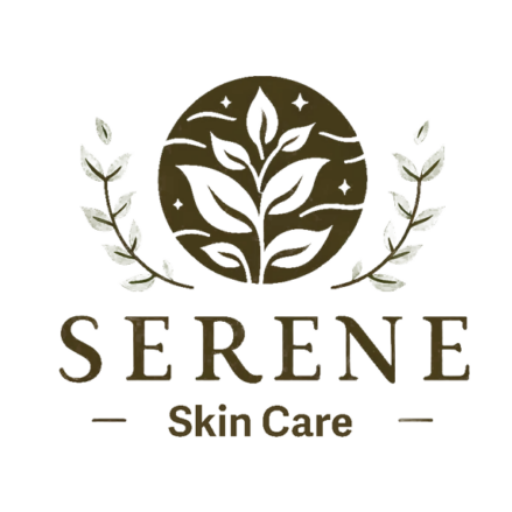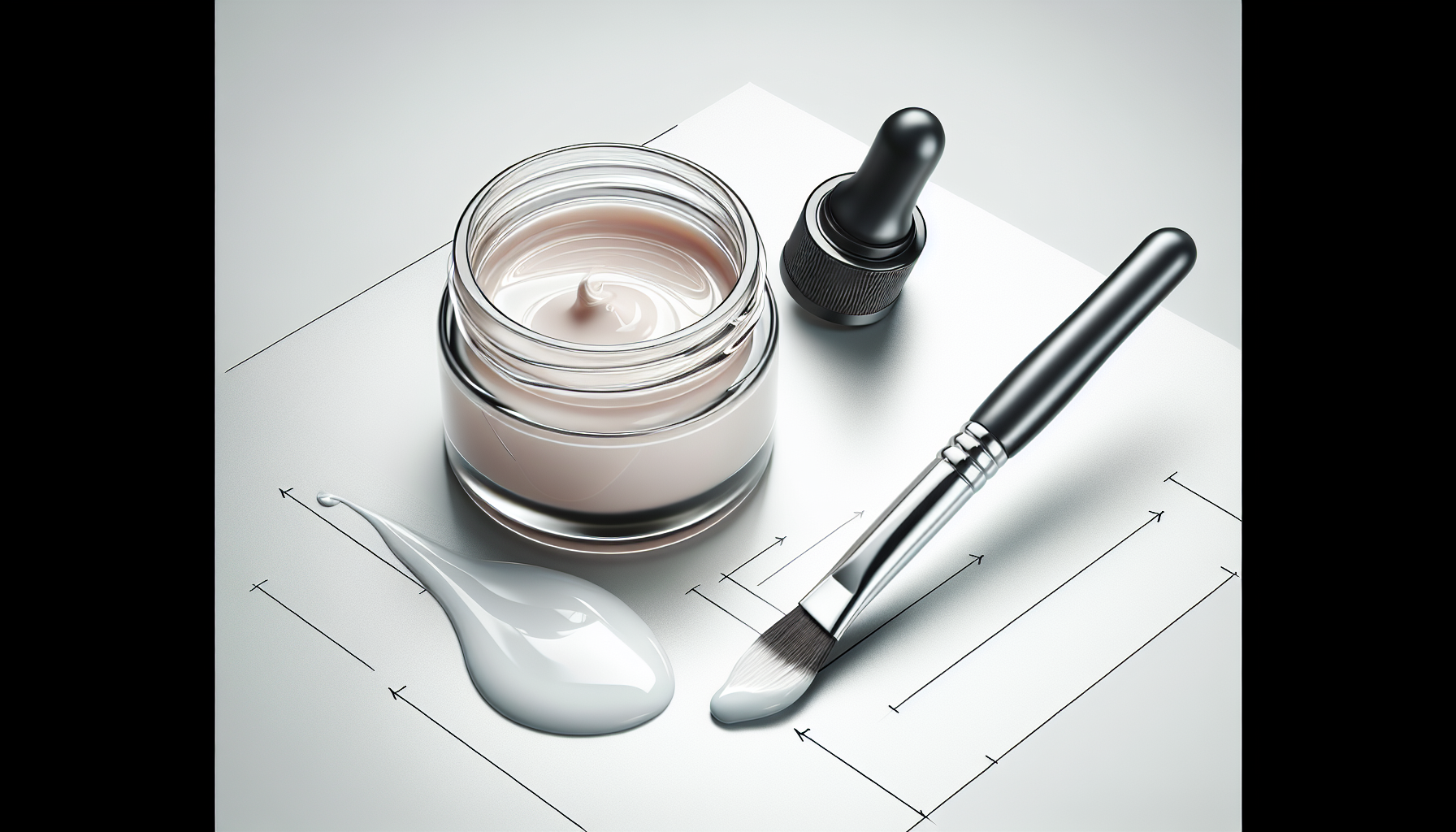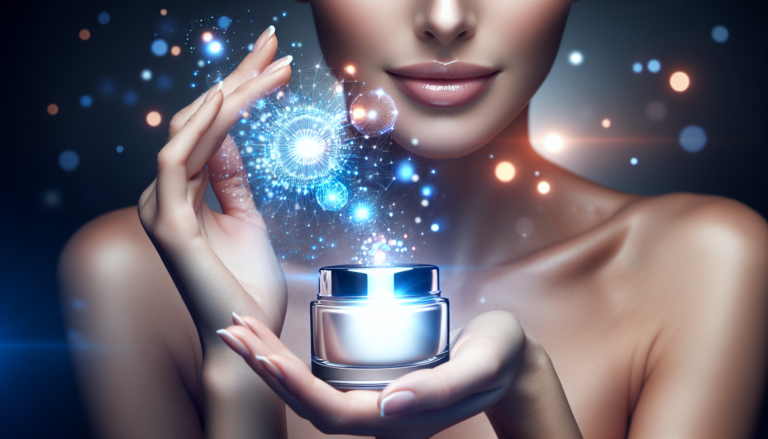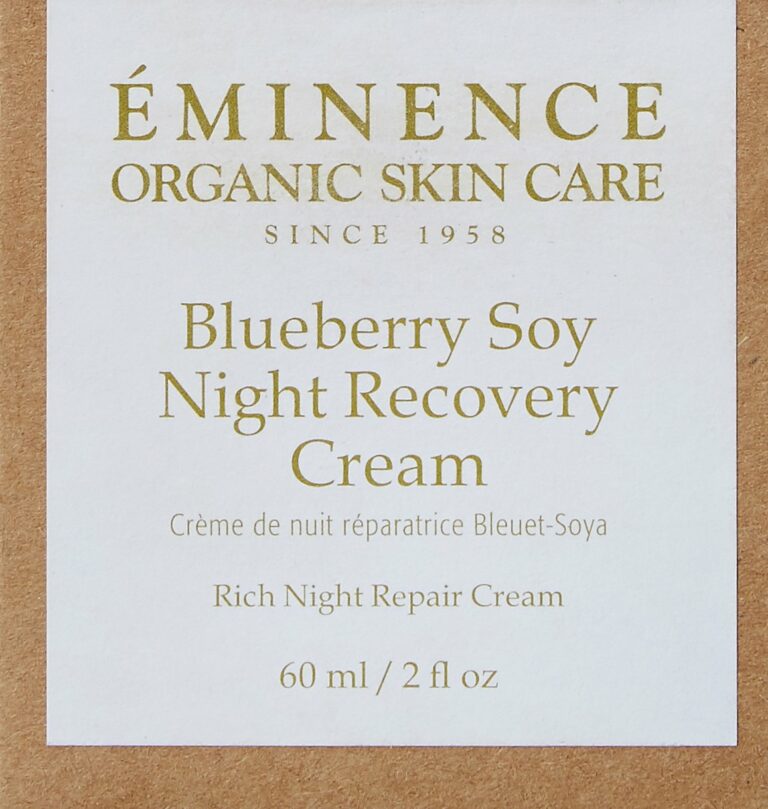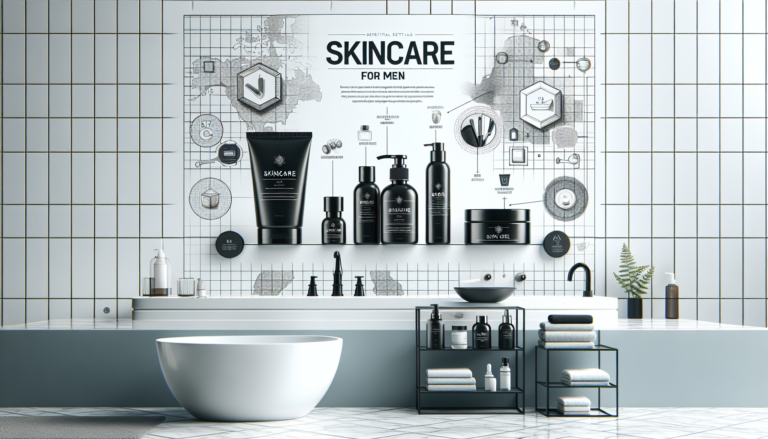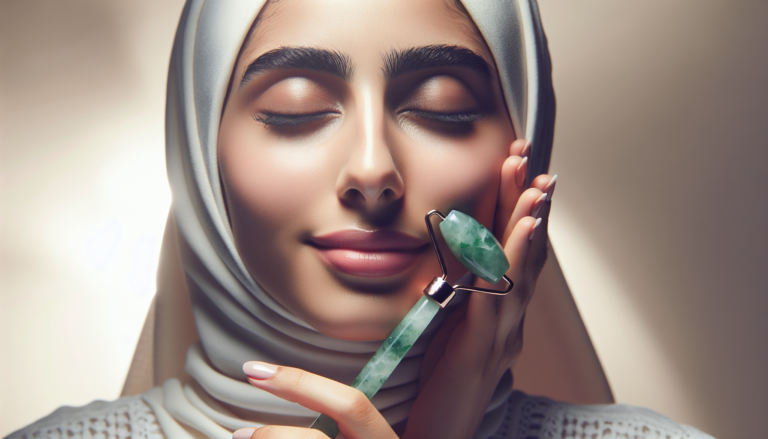In the world of skincare, staying ahead of the curve is essential. That’s why individuals seeking a radiant and youthful complexion have turned their attention to advanced exfoliation techniques. Among these methods, chemical peels have become a popular choice, offering a range of benefits for skin rejuvenation. But these peels are just the tip of the iceberg, as the realm of advanced exfoliation continues to evolve with new and innovative techniques. From dermabrasion to laser resurfacing, this article explores the exciting world of advanced exfoliation techniques and the transformative results they can offer. Chemical Peels have become increasingly popular in the world of skincare for their ability to rejuvenate and enhance the appearance of the skin. They are a form of advanced exfoliation that involves the application of a chemical solution to the skin, which causes the outermost layer to peel off, revealing smoother, younger-looking skin underneath. But chemical peels are just one of many advanced exfoliation techniques available today. In this comprehensive article, we will explore different types of chemical peels, as well as other advanced exfoliation techniques like microdermabrasion, dermabrasion, laser resurfacing, and microneedling. We will also discuss the benefits of each technique, the preparation and procedure involved, as well as the aftercare and recovery required. Additionally, we will touch upon the combination of these techniques for enhanced results, popular ingredients used in advanced exfoliation, and important precautions and considerations to keep in mind. So let’s dive right in and discover the world of advanced exfoliation techniques!
Different Types of Chemical Peels
Chemical peels come in various types, each with its own unique formulation and depth of penetration. The three main types of chemical peels are superficial, medium, and deep peels. Superficial peels, also known as light peels, are the mildest and only target the outermost layer of the skin. They are typically made with alpha-hydroxy acids (AHAs) such as glycolic acid or lactic acid. Medium peels, on the other hand, penetrate the middle layer of the skin and are usually formulated with trichloroacetic acid (TCA). Deep peels, as the name suggests, reach the deeper layers of the skin and often use phenol as the main active ingredient. The specific type of chemical peel recommended will depend on the individual’s skin concerns, desired results, and the assessment of a qualified dermatologist.
Benefits of Chemical Peels
Chemical peels offer a wide range of benefits for the skin. Firstly, they can improve the texture and tone of the skin by reducing the appearance of fine lines, wrinkles, and acne scars. They also help to minimize enlarged pores and even out skin discoloration caused by sun damage or pigmentation issues. Chemical peels can also effectively address certain skin conditions like acne, melasma, and actinic keratosis. Additionally, by removing the outermost layer of dead skin cells, chemical peels stimulate collagen production, leading to firmer, more youthful-looking skin. Overall, chemical peels are a versatile treatment option that can be customized to suit individual needs and provide significant improvements in skin appearance and texture.
Preparation for Chemical Peels
Proper preparation is key to ensuring the success and safety of a chemical peel treatment. Before undergoing a chemical peel, it is important to have a consultation with a dermatologist who will assess the condition of the skin and recommend the appropriate type of peel. It is also crucial to disclose any relevant medical history, current medications, and skincare products being used. In the weeks leading up to the treatment, it is advisable to avoid excessive sun exposure and to discontinue the use of any exfoliating products or medications that may increase skin sensitivity. Some dermatologists may also prescribe pre-peel skincare products to prepare the skin and optimize the results of the peel.
Procedure for Chemical Peels
The procedure for a chemical peel typically involves several steps. Firstly, the skin is thoroughly cleansed to remove any dirt, oil, or makeup. The chemical peel solution is then applied to the skin using a brush or an applicator. The solution is left on for a specific amount of time, determined by the type and depth of the peel being performed. During this time, patients may experience a slight tingling or stinging sensation, which is normal. After the desired time has elapsed, the peel is neutralized or washed off, and a soothing ointment or moisturizer is applied to the skin. Depending on the type of peel, there may be some downtime and temporary side effects like redness, peeling, or mild discomfort. It is important to follow the post-treatment instructions provided by the dermatologist to ensure proper healing and optimal results.
Aftercare and Recovery for Chemical Peels
Aftercare and recovery are crucial aspects of the chemical peel process. Following a chemical peel, the skin will be more sensitive to the sun, so it is essential to use a broad-spectrum sunscreen with at least SPF 30 every day and avoid prolonged sun exposure. It is also important to keep the skin moisturized and hydrated to promote healing and prevent excessive dryness. Patients are typically advised to avoid excessive sweating or strenuous exercise for a few days after the peel to prevent irritation or complications. As the skin heals, it is common to experience some peeling, redness, or mild flaking. It is important not to pick or scratch at the peeling skin to avoid scarring or infection. By following the recommended aftercare routine and being patient with the healing process, patients can expect to see significant improvements in their skin’s texture, tone, and overall appearance.
Microdermabrasion
Microdermabrasion is another popular advanced exfoliation technique that helps to improve the texture and appearance of the skin. It is a non-invasive procedure that uses a device with a small, handheld wand to gently exfoliate the outermost layer of the skin. The wand emits crystals or a diamond tip that abrades the skin’s surface, effectively removing dead skin cells and stimulating collagen production. Microdermabrasion is known for its ability to reduce fine lines, wrinkles, acne scars, and hyperpigmentation. It can also improve skin tone and texture, leaving the skin looking refreshed and rejuvenated.
What is Microdermabrasion
Microdermabrasion is a mechanical exfoliation technique that uses microcrystals or a diamond tip to remove the outer layer of dead skin cells. This painless and non-invasive procedure can be performed by a trained aesthetician or dermatologist. Microdermabrasion is suitable for all skin types and can be used to treat a variety of skin concerns including dullness, fine lines, wrinkles, acne scars, and uneven skin tone. The treatment works by gently exfoliating the skin, stimulating collagen production, and improving blood circulation. It is a popular choice for those looking to achieve a smoother, more youthful complexion without the downtime associated with more aggressive treatments.
Benefits of Microdermabrasion
Microdermabrasion offers a range of benefits for the skin. Firstly, it effectively exfoliates the skin, removing dead skin cells and promoting cell turnover. This can result in a smoother, more even skin tone and texture, as well as a reduction in the appearance of fine lines and wrinkles. Microdermabrasion can also improve the penetration and effectiveness of skincare products, allowing them to better absorb into the skin. Additionally, the gentle exfoliation can stimulate collagen production, leading to firmer, plumper skin. Microdermabrasion is a versatile and safe treatment option for addressing multiple skin concerns and achieving a refreshed and rejuvenated complexion.
Procedure for Microdermabrasion
The procedure for microdermabrasion typically starts with a thorough cleansing of the skin to remove any dirt, oil, or makeup. The practitioner will then guide the handheld device, which emits fine crystals or uses a diamond tip, over the skin’s surface, evenly exfoliating the outermost layer. The intensity of the exfoliation can be adjusted to suit individual needs and concerns. The treatment is usually painless, with patients experiencing a mild scratching or vibrating sensation. After the treatment, a moisturizer or soothing product is applied to the skin to hydrate and calm any redness or irritation. Depending on the individual’s goals and skin condition, multiple sessions of microdermabrasion may be recommended to achieve the desired results.
Aftercare and Recovery for Microdermabrasion
After undergoing microdermabrasion, it is important to take proper care of the skin to promote healing and maintain the results of the treatment. Patients should avoid sun exposure and wear SPF to protect the newly exposed skin from UV damage. It is also advisable to skip any harsh exfoliating products or treatments for a few days following the treatment to allow the skin to recover fully. The skin may be slightly pink and feel sensitive immediately after the treatment, but this generally subsides within a few hours. It is important to keep the skin hydrated and moisturized to minimize any dryness or flakiness. Following the post-treatment instructions provided by the practitioner will ensure optimal recovery and help maintain the improved texture and appearance of the skin.
Dermabrasion
Dermabrasion is a more aggressive form of advanced exfoliation that involves the use of a rotating brush or diamond wheel to deeply exfoliate and resurface the skin. Unlike microdermabrasion, which only targets the outer layer of the skin, dermabrasion can reach the deeper layers, making it an effective treatment for more severe skin concerns such as deep wrinkles, scars, or precancerous skin lesions. Dermabrasion is typically performed by a dermatologist or plastic surgeon, and it requires a longer recovery period compared to other exfoliation techniques.
What is Dermabrasion
Dermabrasion is a surgical procedure that involves the controlled scraping or sanding of the skin’s surface to remove damaged skin and reveal a smoother, healthier layer underneath. It is typically performed on the face, but it can also be used on other areas of the body. Dermabrasion can address a wide range of skin concerns, including acne scars, wrinkles, sun damage, and certain types of skin lesions. The procedure is usually performed under local anesthesia, and the depth of the abrasion can be adjusted based on the individual’s skin condition and desired results.
Benefits of Dermabrasion
Dermabrasion offers several benefits for individuals seeking significant improvement in their skin’s texture and appearance. The procedure can effectively reduce the visibility of deep wrinkles, acne scars, and other types of scars. It can also improve skin tone and texture, evening out irregularities and removing any blemishes or pigmentation issues. Dermabrasion stimulates collagen production, leading to firmer, more youthful-looking skin. Additionally, the procedure can help to improve the effectiveness of skincare products as the freshly exfoliated skin allows for better absorption. While dermabrasion requires a longer recovery period compared to other exfoliation techniques, the results can be highly rewarding for those with more advanced skin concerns.
Procedure for Dermabrasion
The procedure for dermabrasion begins with the numbing of the treatment area using a local anesthetic or a combination of local anesthesia and sedation. Once the skin is adequately numbed, the dermatologist or plastic surgeon will use a specialized handheld device to carefully scrape or sand the skin’s surface. The depth and intensity of the abrasion will depend on the individual’s skin concerns and desired results. After the procedure, the treated area is covered with a protective ointment or dressing to promote healing and protect the skin. Patients may experience some discomfort, redness, and swelling immediately after the procedure. It is essential to follow the post-treatment instructions provided by the healthcare professional to ensure proper healing and minimize the risk of complications.
Aftercare and Recovery for Dermabrasion
The recovery period after a dermabrasion procedure can range from several days to a few weeks, depending on the depth of the treatment and the individual’s healing process. It is normal for the skin to appear red, swollen, and sensitive immediately after the procedure, and these side effects gradually subside over time. Pain medications and topical creams may be prescribed to manage any discomfort or irritation. It is crucial to keep the treated area clean and moisturized as directed by the healthcare professional. Patients are advised to avoid exposing the skin to the sun and to use a broad-spectrum sunscreen with a high SPF to protect the newly exposed skin from UV damage. It is important to follow all post-treatment instructions and attend any follow-up appointments to ensure proper healing and achieve the desired results.
Laser Resurfacing
Laser resurfacing is an advanced exfoliation technique that uses laser technology to improve the appearance of the skin. It targets specific areas of the skin with intense beams of light, effectively removing damaged skin and stimulating collagen production. Laser resurfacing can address a wide range of skin concerns, including wrinkles, acne scars, sun damage, and pigmentation issues. It is a highly effective treatment option that provides significant improvements in skin texture, tone, and overall appearance.
What is Laser Resurfacing
Laser resurfacing is a non-invasive or minimally invasive procedure that uses focused laser beams to precisely target and remove the outer layers of the skin. The different types of lasers used in resurfacing treatments include carbon dioxide (CO2) lasers and erbium lasers. The choice of laser will depend on the individual’s skin concerns, skin type, and desired results. Laser resurfacing works by heating up the skin’s cells, causing the outer layer to peel off and stimulating the production of collagen. The treatment can be customized to target specific areas of concern or to treat the entire face. Laser resurfacing is typically performed by a dermatologist or a plastic surgeon.
Benefits of Laser Resurfacing
Laser resurfacing offers numerous benefits for individuals looking to improve the appearance and texture of their skin. The procedure can effectively reduce the visibility of wrinkles, fine lines, and acne scars. It can also improve skin tone and texture, evening out irregularities and reducing hyperpigmentation caused by sun damage or melasma. Laser resurfacing stimulates collagen production, resulting in firmer, more youthful-looking skin. The treatment can be tailored to suit individual needs, whether it’s treating specific areas or rejuvenating the entire face. Laser resurfacing is a popular choice for those seeking dramatic improvements in their skin’s appearance and texture without the need for invasive surgery.
Procedure for Laser Resurfacing
The procedure for laser resurfacing starts with a consultation with a dermatologist or plastic surgeon who will assess the individual’s skin condition and determine the appropriate laser treatment. On the day of the procedure, the skin is thoroughly cleansed, and eye protection is provided to shield the eyes from the laser beams. Depending on the type of laser used and the intensity of the treatment, a local anesthetic or a numbing cream may be applied to the treatment area to ensure patient comfort. The healthcare professional will then use the laser device to deliver precise beams of light to the targeted areas, removing the outer layers of the skin. The length of the procedure will depend on the size of the treatment area and the complexity of the treatment plan. After the procedure, a soothing ointment or dressing is applied to the skin, and patients are provided with post-treatment instructions for proper care and maintenance.
Aftercare and Recovery for Laser Resurfacing
After laser resurfacing, it is important to follow the recommended aftercare instructions to ensure proper healing and minimize the risk of complications. The treated skin will be more sensitive to the sun, so it is crucial to protect it by wearing a broad-spectrum sunscreen with a high SPF and avoiding direct sun exposure. The skin may appear red, swollen, and sensitive immediately after the procedure, and these side effects can last for a few days to several weeks, depending on the intensity of the treatment. It is important to keep the skin clean and moisturized using gentle skincare products recommended by the healthcare professional. Patients may be advised to avoid strenuous exercise, sauna, or steam baths for a certain period of time to allow the skin to heal properly. It is essential to attend any follow-up appointments scheduled to monitor the healing process and address any concerns or questions.
Microneedling
Microneedling, also known as collagen induction therapy, is a popular advanced exfoliation technique that involves the creation of controlled micro-injuries to the skin using tiny needles. These micro-injuries stimulate the skin’s natural healing process, triggering the production of collagen and elastin, which helps to improve the texture and appearance of the skin. Microneedling can be performed using a handheld device or a specialized pen-like device with multiple fine needles. It is a versatile treatment that can address various skin concerns, including fine lines, wrinkles, acne scars, enlarged pores, and uneven skin tone.
What is Microneedling
Microneedling is a minimally invasive procedure that creates tiny punctures in the skin using fine needles. These microchannels stimulate the skin’s natural healing response, prompting the production of collagen and elastin. The procedure can be performed by a dermatologist or an aesthetician using different devices, including handheld rollers or automated pens. Microneedling is suitable for all skin types and can be used on different areas of the body, including the face, neck, décolletage, and hands. The treatment can be customized to target specific concerns or to achieve an overall improvement in skin texture and tone.
Benefits of Microneedling
Microneedling offers several benefits for individuals seeking to rejuvenate and improve the appearance of their skin. Firstly, it stimulates collagen and elastin production, leading to firmer, smoother skin and a reduction in the visibility of fine lines and wrinkles. Microneedling can also improve the appearance of acne scars, stretch marks, and other types of scars by encouraging the production of new, healthy skin cells. The treatment can also improve skin tone and texture, minimize pore size, and reduce pigmentation issues. Microneedling is a versatile technique that can be used on all skin types and can be combined with other treatments for enhanced results.
Procedure for Microneedling
The microneedling procedure begins with the cleansing of the treatment area to remove any dirt, oil, or makeup. A numbing cream may be applied to ensure patient comfort during the procedure. The handheld device or pen is then gently rolled or glided over the skin in a controlled manner, creating micro-injuries and stimulating collagen production. The depth of the microneedles can be adjusted according to the individual’s skin concerns and goals. After the procedure, a soothing serum or moisturizer is applied to the skin to enhance the healing process and promote optimal results. The procedure is generally well-tolerated, and patients may experience some redness, mild swelling, or sensitivity immediately after, which subsides within a few hours to a few days.
Aftercare and Recovery for Microneedling
After undergoing microneedling, it is important to follow the recommended aftercare instructions to ensure proper healing and maximum benefits. Patients should avoid exposing the treated skin to the sun and wear a broad-spectrum sunscreen with at least SPF 30 to protect it from UV damage. It is essential to keep the skin hydrated and moisturized using gentle, non-irritating skincare products. Patients may be advised to avoid applying makeup or using certain skincare products for a few days after the procedure to allow the skin to heal. The skin may feel dry, tight, or slightly sensitive, but this is normal and temporary. It is important not to pick or scratch at the treated skin to avoid any complications or scarring. Overall, by following the post-treatment guidelines and being patient with the healing process, individuals can expect to see visible improvements in their skin’s texture, tone, and overall appearance.
Combining Techniques for Enhanced Results
While chemical peels, microdermabrasion, dermabrasion, laser resurfacing, and microneedling are each effective on their own, combining these techniques can often produce enhanced results. By creating a customized treatment plan that utilizes multiple advanced exfoliation techniques, dermatologists and aesthetic professionals can address a variety of skin concerns and achieve more comprehensive and desirable outcomes. For example, combining chemical peels with microdermabrasion can provide a deeper exfoliation and enhance the penetration of active ingredients, leading to more significant improvements in skin texture and tone. Similarly, pairing chemical peels with dermabrasion or laser resurfacing can address deep wrinkles, scars, and other advanced skin concerns. Microneedling can also be used in conjunction with other treatments to enhance collagen production and improve the overall efficacy of the procedures. By consulting with a qualified professional, individuals can explore the possibilities of combining these advanced exfoliation techniques for their specific skincare needs.
Popular Ingredients in Advanced Exfoliation
In advanced exfoliation techniques, various ingredients are commonly used to enhance the effectiveness and results of the treatments. These ingredients have specific properties that can target and address different skin concerns, helping to achieve the desired goals. Some of the popular ingredients found in chemical peels, microdermabrasion, dermabrasion, laser resurfacing, and microneedling include:
Glycolic Acid
Glycolic acid is a type of alpha-hydroxy acid (AHA) that is commonly used in chemical peels. It has a small molecular size, allowing it to penetrate the skin deeply and effectively exfoliate the outer layer. Glycolic acid helps to remove dead skin cells, unclog pores, and stimulate collagen production. It is particularly beneficial for treating fine lines, wrinkles, acne scars, and uneven skin tone.
Salicylic Acid
Salicylic acid is a beta-hydroxy acid (BHA) that is often found in chemical peels and skincare products designed for acne-prone or oily skin. It has anti-inflammatory and exfoliating properties, making it effective in treating acne, blackheads, and whiteheads. Salicylic acid penetrates the pores and helps to unclog them, reducing acne breakouts and preventing future blemishes.
Lactic Acid
Lactic acid is another type of alpha-hydroxy acid (AHA) that is commonly used in chemical peels and skincare products. It has gentle exfoliating properties and can effectively brighten the skin, improve skin tone and texture, and reduce the appearance of fine lines and wrinkles. Lactic acid is a suitable option for individuals with sensitive skin or those new to chemical peels.
Retinol
Retinol is a derivative of vitamin A that is widely used in advanced exfoliation techniques and skincare products. It has powerful anti-aging properties and can effectively reduce the appearance of wrinkles, fine lines, and sun damage. Retinol works by promoting cell turnover, stimulating collagen production, and increasing the thickness of the skin. It is a versatile ingredient that can benefit various skin types and concerns.
Precautions and Considerations
While advanced exfoliation techniques can provide significant improvements in the skin’s appearance and texture, there are certain precautions and considerations that individuals should be aware of before undergoing these treatments.
Consultation with a Dermatologist
It is important to consult with a qualified dermatologist before undergoing any advanced exfoliation technique. A dermatologist can assess the condition of the skin, discuss the individual’s goals and concerns, and recommend the most suitable treatment plan. They can also provide valuable information about potential risks, benefits, and expected outcomes.
Skin Sensitivity and Allergies
It is crucial to inform the healthcare professional about any known allergies or skin sensitivities before undergoing any advanced exfoliation treatment. Some ingredients or techniques may not be suitable for certain individuals or may require special precautions to avoid adverse reactions. The healthcare professional will take these factors into consideration when designing the treatment plan.
Skin Conditions to Avoid Advanced Exfoliation
There are certain skin conditions that may be contraindications for advanced exfoliation techniques. Individuals with active or severe acne, eczema, rosacea, psoriasis, or any other inflammatory skin conditions may need to avoid or postpone these treatments until their skin condition improves. It is important to discuss any pre-existing skin conditions with a dermatologist to determine the best course of action.
Proper Preparation and Aftercare
Proper preparation and aftercare are essential for the success and safety of any advanced exfoliation treatment. This includes following the pre-treatment instructions given by the healthcare professional, using recommended skincare products, and adhering to the post-treatment guidelines. It is also crucial to attend any follow-up appointments scheduled to monitor the healing process and address any concerns.
Conclusion
Advanced exfoliation techniques, such as chemical peels, microdermabrasion, dermabrasion, laser resurfacing, and microneedling, offer effective solutions for improving the texture, appearance, and overall health of the skin. Each technique has its own unique benefits and considerations, and consulting with a qualified dermatologist is important to determine the most suitable treatment plan based on individual needs and concerns. By following the recommended aftercare instructions and taking precautions, individuals can achieve smoother, more radiant skin with reduced fine lines, wrinkles, scars, and other imperfections. Whether used individually or in combination, these advanced exfoliation techniques can provide transformative results and help individuals feel more confident in their skin.
